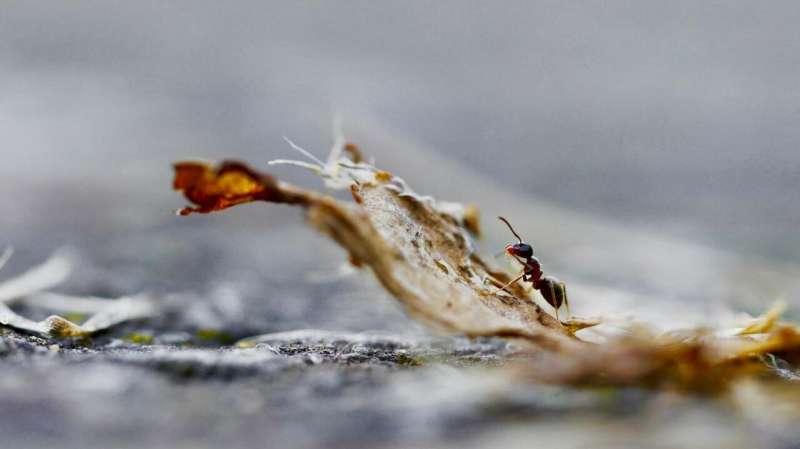Simulation explores how insects glean compass direction from skylight

A computational simulation suggests that insects may be capable of using the properties of light from the sky to determine their compass direction with an error of less than two degrees. Evripidis Gkanias of the University of Edinburgh, U.K., and colleagues present their findings in PLOS Computational Biology.
Several insects, including honeybees, locusts, and monarch butterflies, use the position of the sun to guide their travel. Even when the sun is not visible, these insects can sense the polarization of light in the sky and use it to estimate the sun's position. However, the precise neural processes by which insects transform properties of light from the sky into an accurate compass sense are unclear.
To explore this question, Gkanias and colleagues built a computational simulation that incorporates a hypothetical system of neurons that an insect's brain could potentially use to reconstruct the sun's position from skylight properties detected by the eye. The simulation also incorporates known physical properties of light from the sky, the layout of the insect eye, and other biological parameters determined from previous research on the insect brain.
The simulation suggests that insects should be able to use sky polarization to estimate their compass direction to an error of less than two degrees, without ambiguity and with the ability to correct for passing time. It also shows that this compass information is accurate enough to allow an insect to estimate the distance and direction back to its home, even after moving a long distance away in a random path over rough terrain.
"This highly accurate insect compass could potentially be copied for development of a component in a cheap and self-contained positioning system," Gkanias says. "Such a system could serve as an alternative to GPS for navigation of outdoor robots."
The researchers are now building a prototype physical sensor based on the simulation used in this study. They plan to test the sensor under a real sky and on a real robot.
More information: Evripidis Gkanias et al, From skylight input to behavioural output: A computational model of the insect polarised light compass, PLOS Computational Biology (2019). DOI: 10.1371/journal.pcbi.1007123
Journal information: PLoS Computational Biology
Provided by Public Library of Science



















